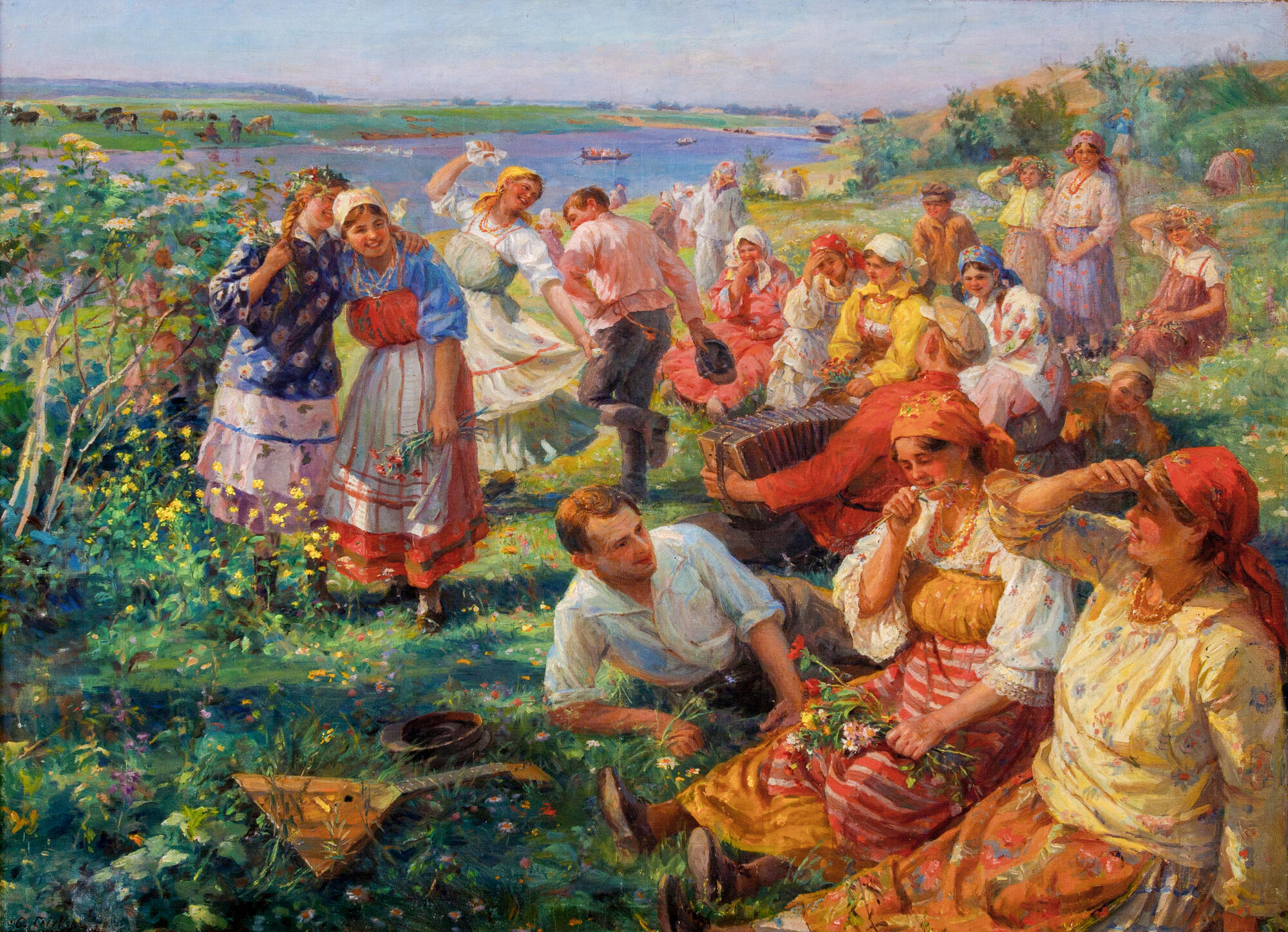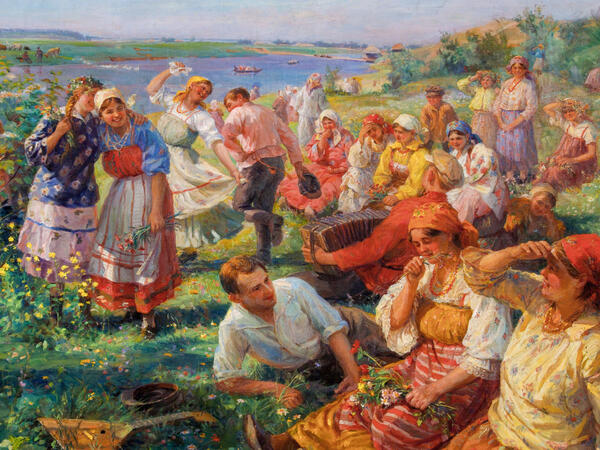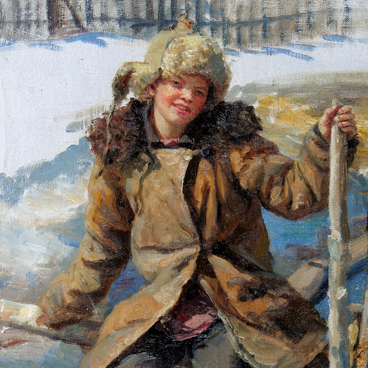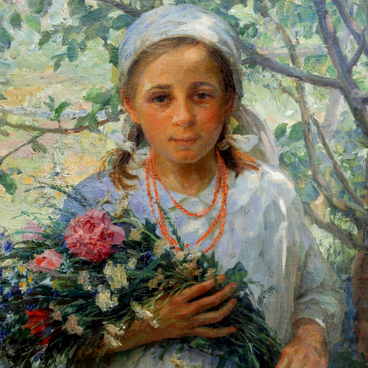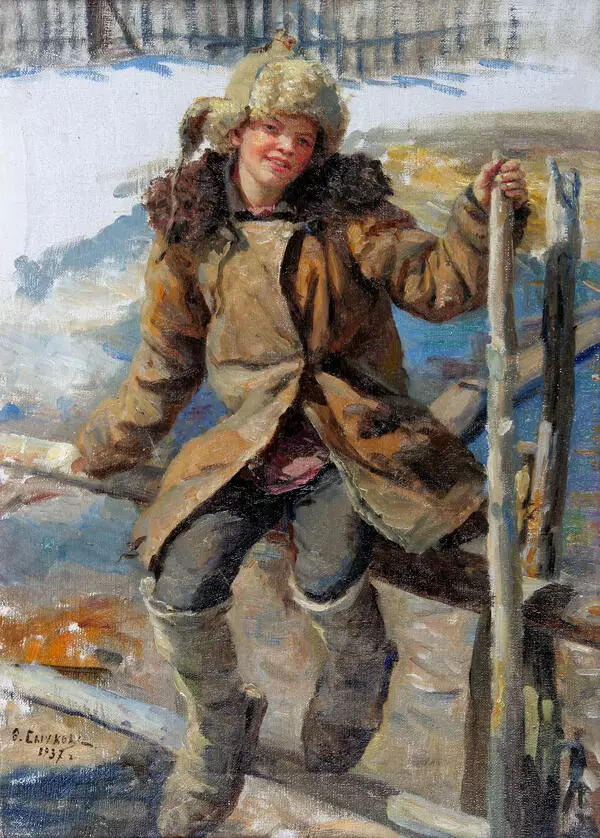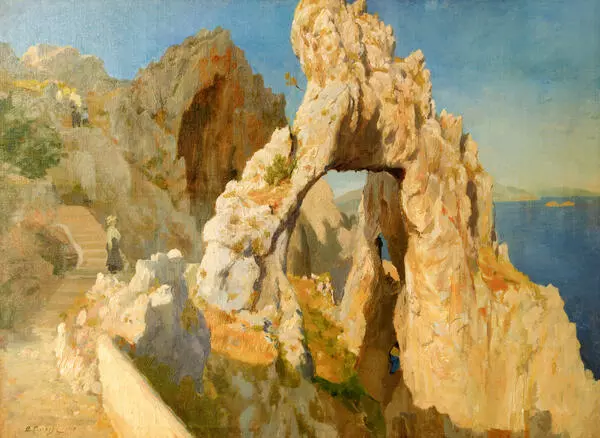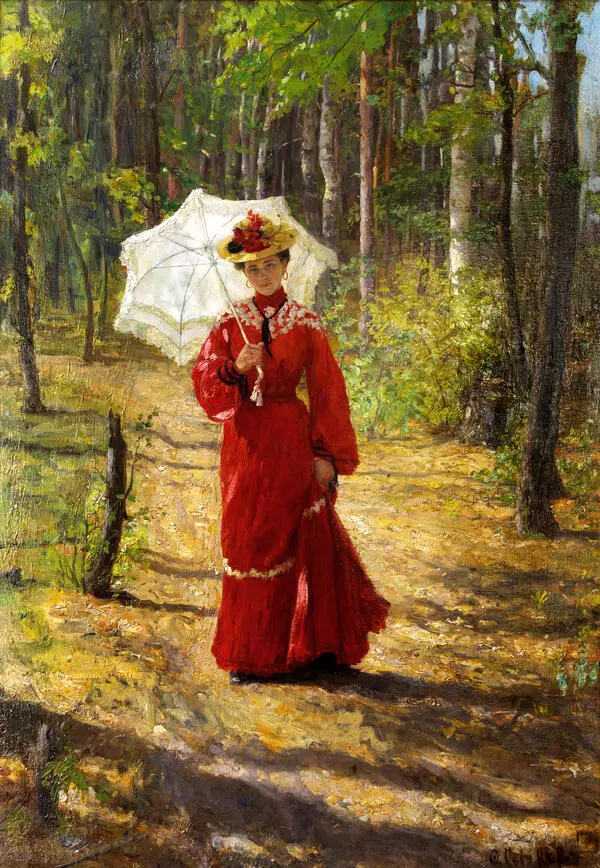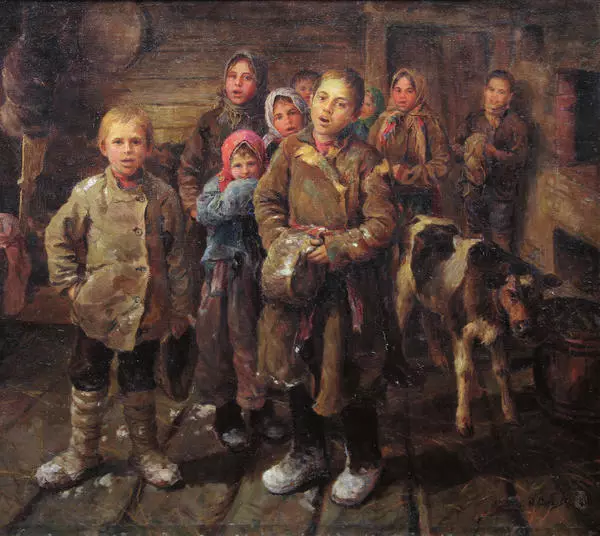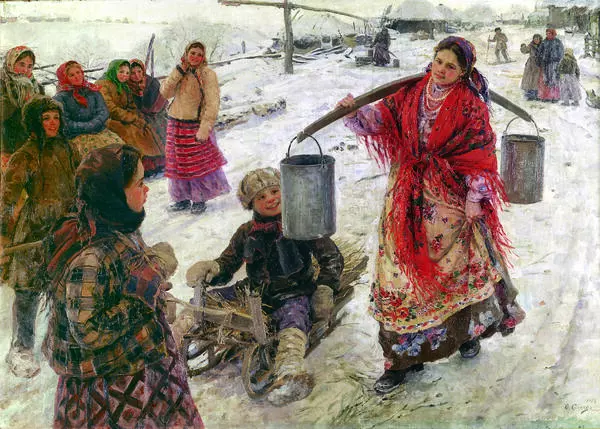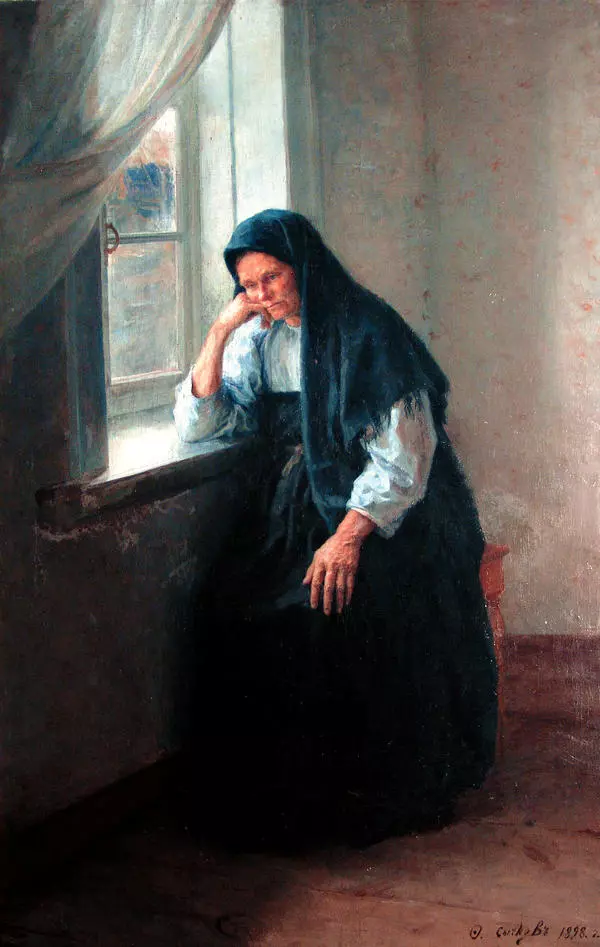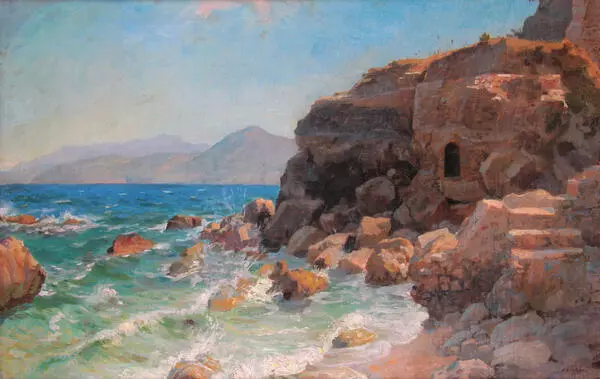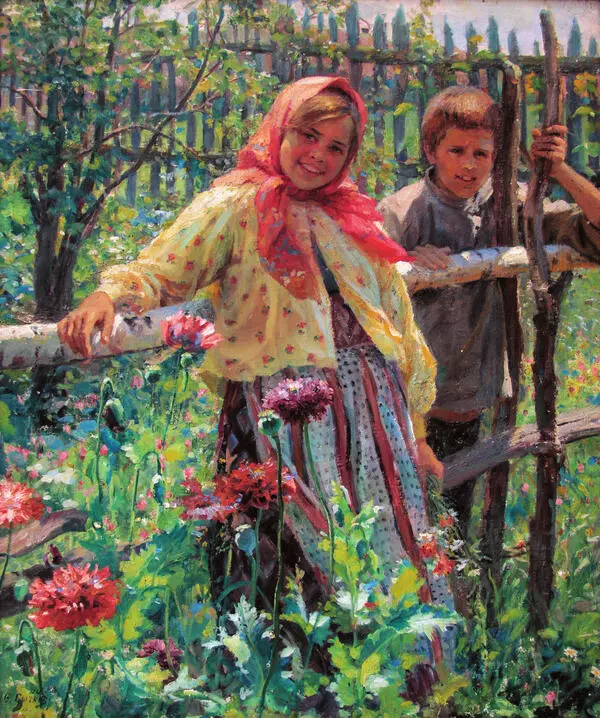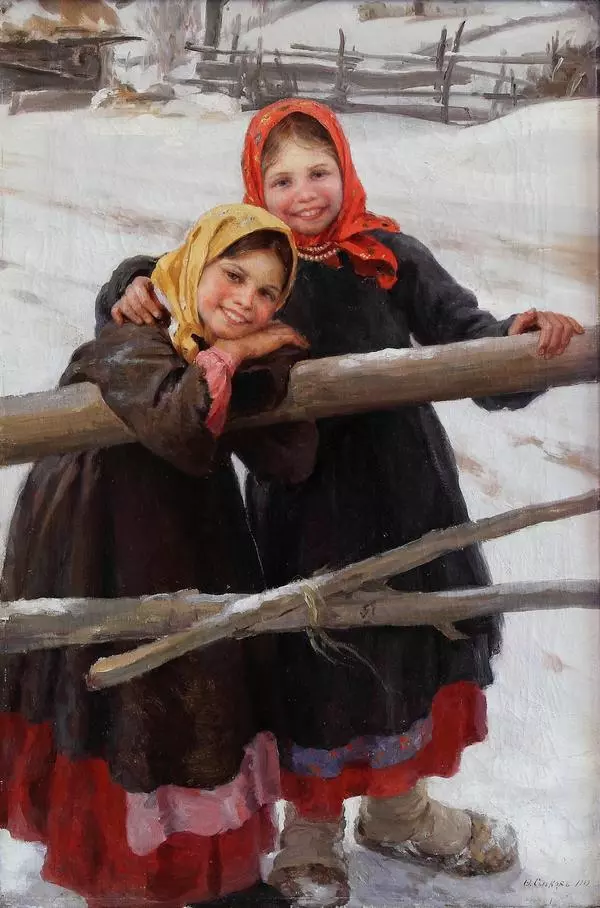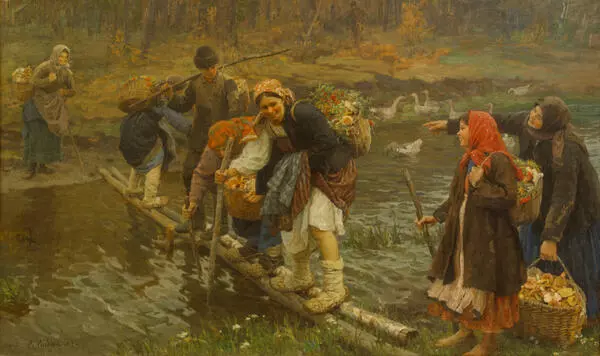The painting ‘Holiday on the Farm’, created in 1936, became one of the most famous works of Fedot Sychkov during the Soviet period. The artist depicted the scene of a crowd celebrating a holiday. The action takes place on the sunny coast of the water-abundant river Moksha, overgrown with wildflowers.
In the foreground, the artist depicted a heartwarming scene of the relationship between a country girl and a boy who came from the city. The girl looks coyly down and bites the wild flower’s stem in confusion. The woman next to her, who covers her eyes with her hand from the sun, barely resists a kind smile. She and the girls standing nearby look at each other. They whisper to each other and smile.
In the background, the characters are arranged in a semicircle near the accordion player. Some people dance to the lively music, the others look at the dancers with joy and curiosity, and eat sunflower seeds.
There is an atmosphere of joy and genuine excitement in the painting. The elegant clothes, beads, and flower wreaths enhance the sense of the holiday. The color palette intensifies this effect. The artist created a color scheme based on combinations of soft blue and green shades. The water, sky, and green bushes create a soft contrast with the bright clothes.
Fedot Sychkov creatively balanced the multi-figure composition, harmoniously distributing the scenes to the foreground and the background. The characters in the distance make the image look alive and create the sense of depth.
The artist loved painting scenes like this one. He was called ‘the folk life’s singer’ because of his sincere interest in the people and their way of life. In the second half of the 1930s, Sychkov began to address more themes in his paintings. He began to refer to Soviet reality with its collective farms and mass celebrations. The paintings ‘Kolkhoz Market’, ‘Harvest Festival’, and ‘Presentation of the Eternal Act of Free Use of the Land’ created at this time are distinguished by the skill of arranging multi-figure compositions and the ability to render the identity of various characters. The artist created bright folk images by using several plots.
In the foreground, the artist depicted a heartwarming scene of the relationship between a country girl and a boy who came from the city. The girl looks coyly down and bites the wild flower’s stem in confusion. The woman next to her, who covers her eyes with her hand from the sun, barely resists a kind smile. She and the girls standing nearby look at each other. They whisper to each other and smile.
In the background, the characters are arranged in a semicircle near the accordion player. Some people dance to the lively music, the others look at the dancers with joy and curiosity, and eat sunflower seeds.
There is an atmosphere of joy and genuine excitement in the painting. The elegant clothes, beads, and flower wreaths enhance the sense of the holiday. The color palette intensifies this effect. The artist created a color scheme based on combinations of soft blue and green shades. The water, sky, and green bushes create a soft contrast with the bright clothes.
Fedot Sychkov creatively balanced the multi-figure composition, harmoniously distributing the scenes to the foreground and the background. The characters in the distance make the image look alive and create the sense of depth.
The artist loved painting scenes like this one. He was called ‘the folk life’s singer’ because of his sincere interest in the people and their way of life. In the second half of the 1930s, Sychkov began to address more themes in his paintings. He began to refer to Soviet reality with its collective farms and mass celebrations. The paintings ‘Kolkhoz Market’, ‘Harvest Festival’, and ‘Presentation of the Eternal Act of Free Use of the Land’ created at this time are distinguished by the skill of arranging multi-figure compositions and the ability to render the identity of various characters. The artist created bright folk images by using several plots.
